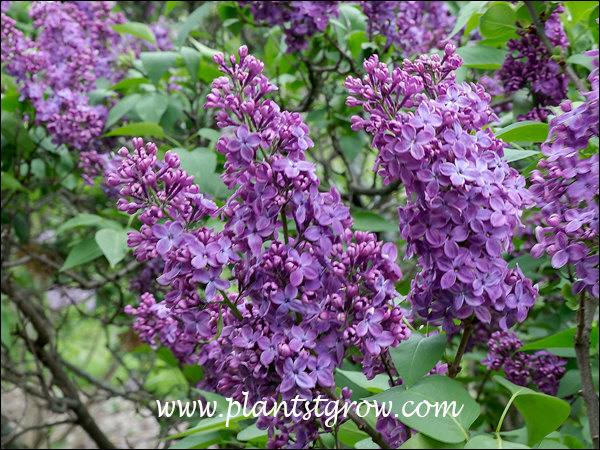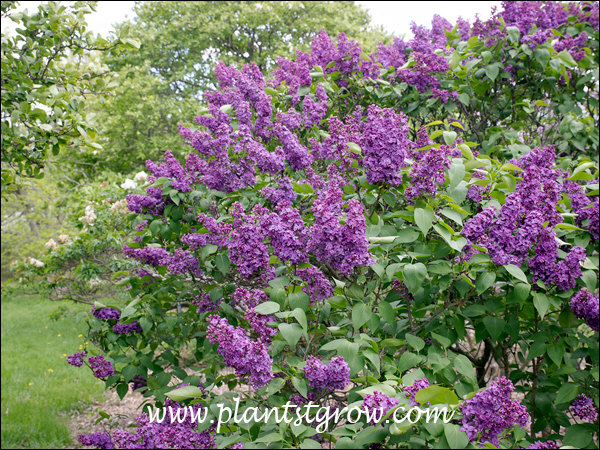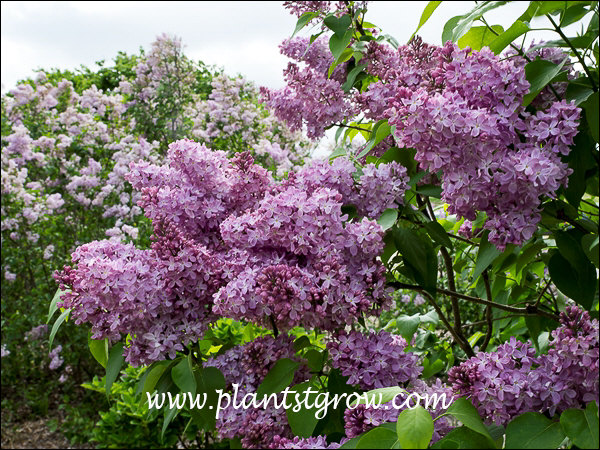| Description | A dark purple Lilac. |
|---|---|
| Pronunciation | (si-RING-gah)(vul-GAIR-iss) |
| Plant Type | All Plants, Shrubs Deciduous |
| Hardiness Zone | 4-7 |
| Sunlight | full, I have been asked many times "Why doesn't my Lilac flower as good as before". The reason is usually the amount of light. Many plants are shaded as the trees grow larger around them and also many Lilacs are plant in one direction light. This means one side has more flowers more than the other |
| Moisture | aveage |
| Soil & Site | average, doesn't like soggy wet |
| Flowers | single dark purple, borne in an upright panicle |
| Fruit | beaked dehiscent capsule |
| Leaves | simple, green leaves, heart shaped , little if any fall color, may suffer from powdery mildew in the fall, best planted where it has good air circulation |
| Stems | raised lenticels on stems, forms multiple stems |
| Dimensions | probably greater than 6-8 by 6-8 feet, too large for use near the house, best used as specimen plants or in shrub borders, can be used in corner plantings as long as given 6-8 feet from the corner |
| Maintenance | Since Lilacs bloom on next season’s wood, prune after they are done blooming. There are many different ways to prune a Lilac. The most drastic is to cut them down to the ground. I have had ones sucker back and regrow while others that didn't make it using this method. You can cut out the old stems and let the new suckers fill in thinning them to the desired amount. On many old plants we have removed all the suckers and left a few of the old stalks. Pruning them up to bare base stems, turning the plant into a small tree. Drastic pruning may delay flowering a few years |
| Propagation | division of a suckers, cuttings |
| Native Site | Lilac is native to Europe and has been in cultivation since the 16th century. |
| Cultivar Origin | prior to 1938 |
| Notes & Reference | #104-Lilacs “A Gardeners Encyclopedia” (Fiala) |

Cart



